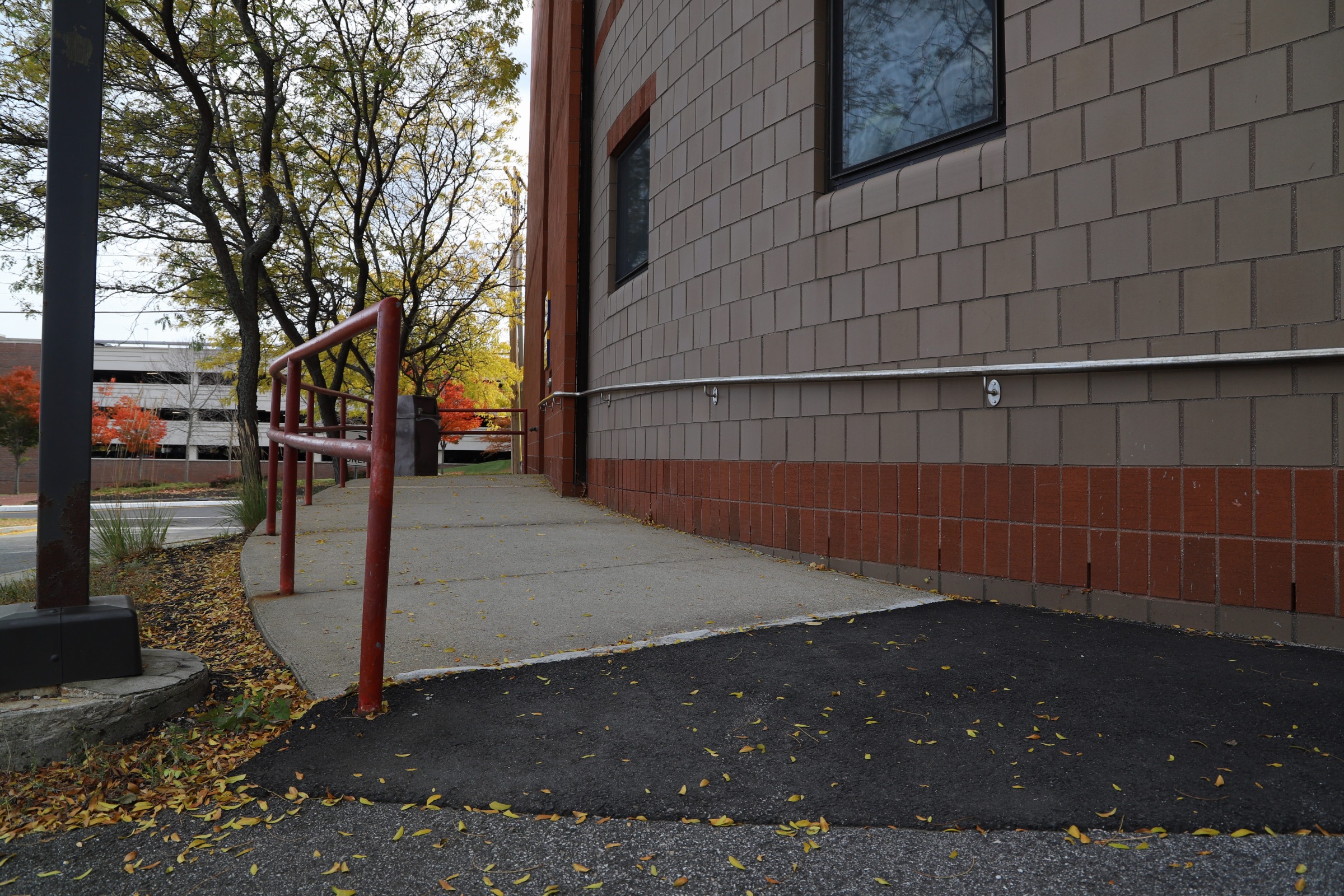By: Paige Riddell, Staff Writer
Not every building on USM’s campuses is up to accessibility standards. Of the 33 buildings that are owned and utilized by USM in Portland, 15 of them (45%) are not wheelchair accessible; on the Gorham campus 3 buildings are inaccessible. The majority of the inaccessible buildings line Bedford Street and Exeter Street, such as the Women and Gender Studies building, the Office of Public Affairs and the Free Press and WMPG. The only building of Bedford Street houses that is accessible is Human Resources, but only the first floor.
Bianca Sturchio, a social work graduate at USM, says these accessibility restrictions affect her due to her diagnosis of cerebral palsy and scoliosis.
“I live with the implications of overlapping physical conditions, as well as mental health challenges, and learning-related difficulties. To me, accessibility means having the same types of opportunities as the ‘normative’ or non-disabled student, and adequate support to facilitate my education at a comparable capacity to those who do not face additional challenges or educational barriers,” Sturchio said. “Unfortunately, I have encountered many setbacks throughout my educational journey that confirms the university can and must do better.”
The university feels restricting, according to Sturchio. “Yes. I feel restricted by the lack of disability-inclusive content within the core curriculum at USM, or any curriculum, really, which restricts me from feeling visible, understood, or acknowledged,” Sturchio said. Some of the activities students wouldn’t be able to participate due to physical limitations in include going to the Women and Gender Studies fall open house, speaking to people in the public affairs office, and hosting a radio show through WMPG.
There are laws in place to protect people from architectural barriers in communities and in educational settings. The Architectural Barriers Act (ABA) requires access to facilities that are designed, built or altered with federal funds or leased by federal agencies. The ABA works in conjunction with the Americans with Disabilities Act (ADA) of 1990. ADA mandates that facilities in the private sector and the state/local government sector without regard to federal funding, have to be accessible. Making a building accessible includes installing ramps, lifts and anything else that would aid in successfully securing a building is open to everyone.
Title 34 Education, which is a nondiscrimination act to eliminate restrictions on the basis of handicap in an educational setting, states disability discrimination is strictly prohibited. As said in section 104.21, “no qualified handicapped person shall, because a recipient’s facilities are inaccessible to or unusable by handicapped persons, be denied the benefits of, be excluded from participation in, or otherwise be subjected to discrimination under any program or activity to which this part applies.”
The least accessible of the USM campuses is the Portland campus, although this problem stretches across all to varying degrees. USM is working towards full accessibility according to John Souther, Executive Director of Facilities Management at USM.
“We do have a master plan that is published. Students come first,” Souther said “We have moved classes before for certain individuals, employees, and such. It’s something we strive to do better at, for sure. Some of the white houses [Bedford street houses] are so old. There are no elevators because they are residential houses that have been acquired.”
The master plan Souther referred to does not have a section on making Portland’s current campus more accessible. The long term, five-to-twenty year plan for the Portland campus includes building a new Graduate Center for Professional Studies, a Center for the Arts, Student housing, and a new “quad” outdoor space where the Woodbury parking lot currently is. These changes do not address the buildings that are currently inaccessible, leaving all of the Bedford Street and Exeter Street houses untouched. The master plan states its guiding principles are student experience, inclusiveness, net zero building policy, public safety, mobility, sustainability, neighbors, and aesthetics.
“Building accessibility standards have been around for decades and when the laws were enacted, colleges and universities created transition plans. These were meant to identify current barriers and create a plan for remediation,” said Joanna Benica, Director of Disability Services. “USM does have a plan which has been updated over the years. We still have work to do.”
As of now, USM is willing to assist students in any way possible through the disabilities office, located on the second floor of Luther Bonney. According to Benica, they will help by moving classrooms to an accessible location, and if a faculty office is not able to be accessed they will provide space to meet during office hours. She also invites students who are experiencing any barriers to contact their office so they can help provide access and support.

